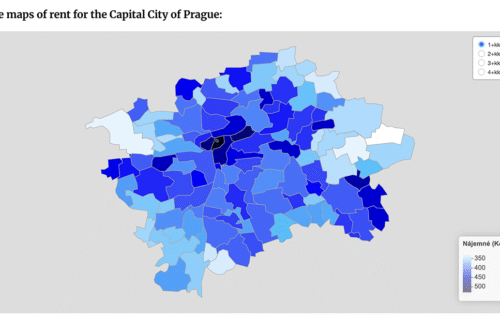The Czech government has approved the creation of a national register of apartments, a database that will for the first time provide comprehensive information on how many flats exist in the country, where they are located, and how large they are. The register is being developed jointly by the Ministry for Regional Development (MMR) and the Ministry of Finance (MF), and its basic version is expected to be completed within two years of the approval of the amended Basic Registers Act. The system should be fully operational by the time of the 2031 national census.
According to Regional Development Minister Petr Kulhánek (STAN), the register will allow the government to better target housing-support measures. “With accurate data on apartment size, location, and occupancy, we will be able to direct our affordable-housing programmes more effectively — for example, distinguishing between homes suitable for individuals or families,” Kulhánek said following the cabinet meeting.
Currently, data on housing stock come from fragmented sources — the Land Registry, the Czech Statistical Office (ČSÚ), and census data. The latest comprehensive figures date from the 2021 census, which showed that roughly 200,000 apartments in multi-unit buildings were unoccupied, an increase of 40 percent since 2011. The MMR notes that many of these may be investment flats, short-term rentals, or properties in poor technical condition.
The new register is intended to complement the “Cenová mapa” developed by the Ministry of Finance, which tracks market rents and construction costs across cadastral areas. The map helps to identify regional price disparities — for example, higher rental and building costs in Prague, Brno, and coastal spa towns compared with smaller municipalities in the Ústí nad Labem, Karlovy Vary, or Vysočina regions.
According to the Ministry of Finance, the Cenová mapa is part of a broader digital-governance initiative to improve data transparency in public investment and urban planning. It provides a visual overview of average rental levels, land values, and construction costs per square metre, supporting both municipal planning and state housing policy. By integrating data from this price map into the new housing register, the state aims to link property quantity and quality with cost trends, allowing for more precise policy interventions and long-term planning.
Experts from both ministries believe that the combined use of the apartment register and the price map will help identify underused or vacant housing, inform social-housing strategies, and make public support schemes more efficient.
“The goal is not only to know how many flats we have,” Kulhánek said, “but also to understand how they are being used, where they are missing, and how their costs relate to local market conditions.”
